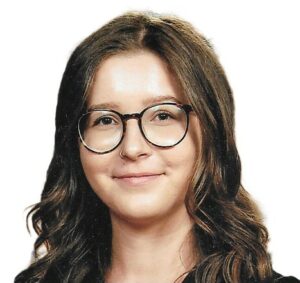
Background
Anna Wagner is a zooarchaeologist with an interest in human-animal interactions and prehistoric subsistence strategies. She is currently pursuing a PhD in Zooarchaeology at the University of Reading within the scope of the COEXIST project, under the supervision of Dr. Karen Ruebens, Dr. Geoff Smith, and Dr. Britt Starkovich. Her research builds on fieldwork and lab experience, focusing on the analysis of faunal remains to explore patterns of human behavior during the Paleolithic.
Her academic foundation includes a BSc in Biology, a BA in Prehistory and Historical Archaeology, and an MSc in Evolutionary Anthropology from the University of Vienna. Her MSc dissertation examined trauma and injuries in long bones from an Avar cemetery in Lower Austria, while her BA dissertation investigated the taphonomy and evidence of burning in the faunal assemblage from Grub-Kranawetberg I. Since 2022, she has been involved in excavations at the Gravettian site of Grub-Kranawetberg II, as well as managing the post-excavation processing of the finds.
In addition to several years of excavation and survey work across Austria and Kenya, she has gained hands-on experience in ancient DNA analysis, including sampling and preparing bones in a dry lab.
PhD project: Unravelling the subsistence and diet of late Neanderthals and early Homo sapiens in Central and Southeast Europe.
Upper Palaeolithic Homo sapiens subsistence has long been correlated with a shift in site use and occupation intensity (meaning they stayed for longer at one location), and an expansion in diet breadth to include smaller and faster animals. However, the role of subsistence differences in the replacement of Neanderthals by Homo sapiens is still poorly understood. This is partly because Palaeolithic bone assemblages are dominated by small non-diagnostic bone fragments, meaning that for 70-90% of the bones recovered from an archaeological site we do not know what type of animal (or human) they belonged to. The method of Zooarchaeology by Mass Spectrometry (ZooMS) can now identify these fragments through variations in their collagen. The aim of this PhD is to further develop the field of biomolecular zooarchaeology, fully integrating ZooMS and zooarchaeological datasets to reconstruct past survival strategies. This project contains 4 major components which can be developed according to the interest and experience of the PhD candidate:
1. Morphological identification and in-depth recording of zooarchaeological and taphonomic attributes of Palaeolithic faunal assemblages from central and southeast Europe (covering the area from Germany to Greece).
2. Application of Zooarchaeology by Mass Spectrometry (ZooMS), which uses MALDI-TOF mass spectrometry, to taxonomically identify morphologically unidentifiable bone fragments. The successful applicant will be fully trained in all aspects of the ZooMS protocol by Dr Ruebens.
3. Developing quantification methods (e.g. MNE, MNI, weight based quantification) for ZooMS analysed assemblages, allowing for further in-depth integration with existing zooarchaeological and taphonomic datasets.
4. Integrating and analyzing zooarchaeological, ZooMS and taphonomic data to investigate changes in diet and subsistence between Neanderthals and Homo sapiens across the study region.
The supervisory team consists of Dr. Karen Ruebens (Project PI, University of Reading), Dr. Geoff Smith (Zooarchaeologist, University of Reading) and Dr. Britt Starkovich (Zooarchaeologist, University of Tübingen).
